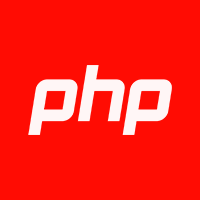-

- MySQL安全补丁管理流程_MySQL及时更新与漏洞防护
- MySQL安全补丁管理必须系统化、持续化,1.建立信息获取机制及时接收官方和CVE漏洞信息;2.进行风险评估与决策,分析漏洞影响及修补风险;3.严格测试补丁,验证功能、性能、数据完整性并制定回滚方案;4.计划性部署并实时监控;5.定期审计回顾优化流程。忽视补丁管理常因稳定性优先、资源不足或对漏洞认知不足,但潜在风险极高。构建高效测试环境需镜像生产配置、实现自动化部署与测试,并验证回滚策略。应对挑战的最佳实践包括主从切换、蓝绿部署、滚动更新以减少停机,详尽测试与渐进更新避免兼容性问题,负载测试与持
- 运维 . kubernetes 898 2025-07-20 13:49:01
-

- Flink应用部署模式
- Flink是一个多功能框架,支持多种部署场景的混合搭配。接下来,我们将简要介绍Flink集群的构建块及其用途和实现。如果您只是想在本地启动Flink,我们建议您设置一个独立集群。概述和参考架构下图展示了Flink集群的每个构建块。总有一个客户端在运行,它获取Flink应用程序的代码,将其转换为JobGraph并提交给JobManager。JobManager将工作分配到TaskManagers上,实际操作符(例如源、转换和接收器)在此运行。在部署Flink时,每个构建块通常
- 运维 . kubernetes 546 2025-07-20 13:02:11
-

- C++云计算微服务环境怎么搭建 gRPC负载均衡方案实现
- 实现gRPC负载均衡的主流方案包括客户端负载均衡、代理层负载均衡和KubernetesServiceL4负载均衡。1.客户端负载均衡由gRPC客户端直接处理服务发现与负载均衡逻辑,优点是低延迟、高性能、成本低,缺点是增加客户端复杂性,适用于同构环境下的高频率内部服务调用;2.代理层负载均衡通过Envoy等L7代理集中管理流量,支持熔断、限流、可观测性等高级功能,缺点是引入额外延迟和运维复杂度,适合对外暴露服务或异构系统间的通信;3.KubernetesServiceL4负载均衡基于kube-pr
- 运维 . kubernetes 610 2025-07-20 12:42:02
-

- Golang如何提升云原生应用的启动速度 分析轻量级二进制与快速冷启动优势
- Golang在云原生应用中提升启动速度主要因其静态编译生成的轻量级二进制文件和天然支持快速冷启动的能力。1.Go的二进制是静态链接的,不依赖外部库,直接打包运行所需的一切,减少了启动时加载动态库的时间;2.不需要启动虚拟机或解释器,没有复杂的类加载或依赖解析步骤,体积通常仅几MB,适合快速传输部署;3.快速冷启动在FaaS场景下显著降低响应延迟,AWSLambda和阿里云等平台推荐使用Go,启动时间常控制在几十毫秒内;4.优化方式包括精简依赖、预热处理逻辑分离、合理使用init函数及构建最小基础
- 运维 . kubernetes 975 2025-07-20 11:37:01
-

- 为什么Golang成为云原生Wasm运行时首选 对比wasmtime与wasmer性能
- Golang成为云原生Wasm运行时首选的原因有三:1.其并发模型(goroutines和channels)适合高并发场景,结合Wasm的轻量级特性可构建高性能应用;2.Golang标准库和第三方库丰富,便于快速开发Wasm应用;3.静态编译特性使Wasm应用可打包为独立可执行文件,易于部署。在Wasm运行时选择上,wasmtime侧重安全性,适合多租户等场景;wasmer注重性能,适用于计算密集型任务。两者并非互斥,可结合使用以兼顾安全与性能。Golang可通过tinygo编译、plugin包
- 运维 . kubernetes 1035 2025-07-20 10:34:01
-

- Linux容器安全管理_LinuxDocker容器安全最佳实践
- 容器安全管理核心在于构建多层次防御体系,从镜像构建、运行时隔离、宿主机加固、网络策略到持续监控形成整体防护。1.确保Docker镜像安全需选择最小基础镜像、进行漏洞扫描、采用多阶段构建、使用数字签名验证;2.运行时应以非root用户运行容器、限制capabilities、配置seccomp与MAC策略、设置只读文件系统;3.网络安全方面实施网络隔离、最小权限配置、加密内部通信;4.数据持久化方面合理选用卷管理、控制权限、使用Secrets机制或外部工具管理敏感信息。
- 运维 . kubernetes 936 2025-07-20 10:30:03
-

- AI写作助手App开发:核心技术架构揭秘
- 在内容创作需求激增的时代,AI写作助手App的开发正成为众多企业与创业者的重点布局方向。这类应用能够显著提升创作效率和质量,而其核心竞争力则在于坚实的App核心技术架构。以下是对该类应用技术内核的深度剖析:一、智能引擎:自然语言处理(NLP)模块大模型驱动能力:以GPT、BERT等前沿大模型为底层支撑,具备强大的文本理解、生成与逻辑推理能力,构成写作功能的核心基础。场景化微调机制:在通用模型基础上,针对不同写作用途(如广告文案、小说、报告)进行精细化调整,确保输出内容的专业性与适用性。即时文本分
- 运维 . kubernetes 1017 2025-07-20 10:14:42
-

- 云存储硬核技术内幕——(27) 次元壁坍塌
- 在上一期中,我们讨论了容器在运行时受到namespace、rootfs和cgroups等限制,无法将写入的数据持久化存储。然而,在云原生应用中,某些组件确实需要数据持久化存储。回到我们开篇的问题:X博希望利用kubeflow构建一个深度学习平台,用于训练神经网络模型,以便自动识别所有江疏影和方方的图片:因此,kubeflow的容器实例必须能够将训练模型持久化存储。否则,X博的工作即使找到了抓手,协调了周边资源,明确了项目目标,提炼了底层逻辑,优化了策略,采取了综合措施,但由于缺乏沉淀,没有形成闭
- 运维 . kubernetes 792 2025-07-20 10:04:15
-

- bpf| 系统分析工具
- bpf最初是为bsd操作系统开发,全称是「BerkeleyPacketFilter」,翻译过来是「伯克利包过滤器」,顾名思义,它是在伯克利大学诞生的,1992年StevenMcCanne和VanJacobson写了一篇《TheBSDPacketFilter:ANewArchitectureforUser-levelPacketCapture》论文用户使用bpf虚拟机的指令集(bpf字节码)定义过滤器表达式,然后传递给内核,由解释器执行。从而使得包过滤器可以
- 运维 . kubernetes 463 2025-07-20 10:04:01
-

- Golang如何实现服务间认证 使用JWT和mTLS安全通信实践
- 要实现健壮的服务间认证,单靠JWT或mTLS都不够,必须结合使用。1.mTLS通过证书体系确保通信双方身份验证和数据加密,服务器端配置tls.Config要求客户端证书,客户端也需提供证书验证服务器;2.JWT用于应用层传递身份和授权信息,在mTLS安全通道基础上,服务调用时在请求头携带JWT,接收方验证签名及Claims获取权限信息;3.单独使用JWT无法保障传输安全,易受中间人攻击,且无法验证通信对端身份;4.仅用mTLS难以传递细粒度的业务授权信息,无法满足应用层权限控制需求;5.两者互补
- 运维 . kubernetes 373 2025-07-20 09:38:02
-

- 怎样用Golang管理大规模部署 实现Kustomize风格配置渲染
- 使用Golang实现类似Kustomize的配置渲染系统可提升灵活性和可维护性。1.模板化配置,通过base+overlay结构减少重复并保证一致性;2.抽象配置结构体,支持多环境复用并通过外部数据源动态加载;3.实现patch和overlay机制,细粒度修改资源配置;4.整合工具链与自动化流程,如CI/CD、dry-run预览及一键部署。设计良好的模块化结构是实现高效配置管理的关键。
- 运维 . kubernetes 623 2025-07-20 08:53:01
-

- 如何使用Java实现API网关功能 Java接口统一转发逻辑开发
- 要使用Java实现API网关功能,核心在于构建高效、可扩展的请求转发代理,涉及路由管理、请求过滤链、服务发现与负载均衡等关键模块。1.路由配置:通过SpringCloudGateway的RouteLocator定义请求路径、Host、Header等映射规则,实现请求转发;2.请求过滤链:使用GatewayFilter接口实现认证、限流、日志等功能,并通过Ordered接口控制执行顺序;3.服务发现与负载均衡:结合Eureka、Nacos等注册中心,利用lb://协议实现服务自动发现和负载均衡策略
- 运维 . kubernetes 703 2025-07-19 19:24:02
-

- 如何用Java读取配置文件 Java读取.properties配置文件技巧
- 在Java中读取.properties配置文件,主要通过java.util.Properties类实现,常见方式有两种:1.从文件系统路径读取,适用于外部可修改的配置;2.从类路径读取,更推荐用于应用内部配置。两者均通过InputStream加载配置,使用getProperty()获取键值。.properties文件因其简单直观,适用于扁平化、少量配置的场景,而JSON/YAML更适合复杂结构或数据交换。处理配置文件时常见陷阱包括路径问题、硬编码默认值、缺乏错误处理、敏感信息泄露等,最佳实践包括
- 运维 . kubernetes 801 2025-07-19 17:20:02
-

- 如何用官方镜像部署PHP环境 Docker Hub拉取PHP镜像的用法
- 要部署PHP环境应选择官方镜像,1.使用dockerpull获取镜像,2.通过dockerrun启动容器,3.根据需求选择CLI、FPM或Apache标签,4.用绑定挂载或卷实现代码和数据持久化,5.生产环境需考虑资源限制、安全性、监控、网络和服务编排。CLI适用于命令行脚本,FPM适合高并发Web应用,Apache适合简单部署;绑定挂载用于开发,卷用于生产;安全方面应以非root用户运行容器,使用轻量镜像,定期更新;部署时结合DockerCompose或Kubernetes实现多容器管理和服务
- 运维 . kubernetes 810 2025-07-19 13:34:02
-

- Linux容器技术入门_LinuxPodman与Docker对比分析
- Linux容器技术,简单来说,就是一种轻量级的虚拟化技术,它让应用及其依赖项被打包在一个独立、可移植的“容器”里,无论在哪台机器上,都能以相同的方式运行。而在这个领域,Docker无疑是先行者和普及者,但Podman的出现,则提供了一个去中心化、更注重安全和Kubernetes兼容性的替代方案,两者在选择上各有侧重,但都旨在简化软件的部署和管理。在深入探讨容器技术时,我们不得不提它解决的核心痛点:环境一致性。过去,我们常说“在我机器上能跑”,但一到测试环境或生产环境就出问题,这几乎是每个开发者的
- 运维 . kubernetes 381 2025-07-19 13:21:02

PHP讨论组
组员:3305人话题:1500
PHP一种被广泛应用的开放源代码的多用途脚本语言,和其他技术相比,php本身开源免费; 可以将程序嵌入于HTML中去执行, 执行效率比完全生成htmL标记的CGI要高许多,它运行在服务器端,消耗的系统资源相当少,具有跨平台强、效率高的特性,而且php支持几乎所有流行的数据库以及操作系统,最重要的是





























